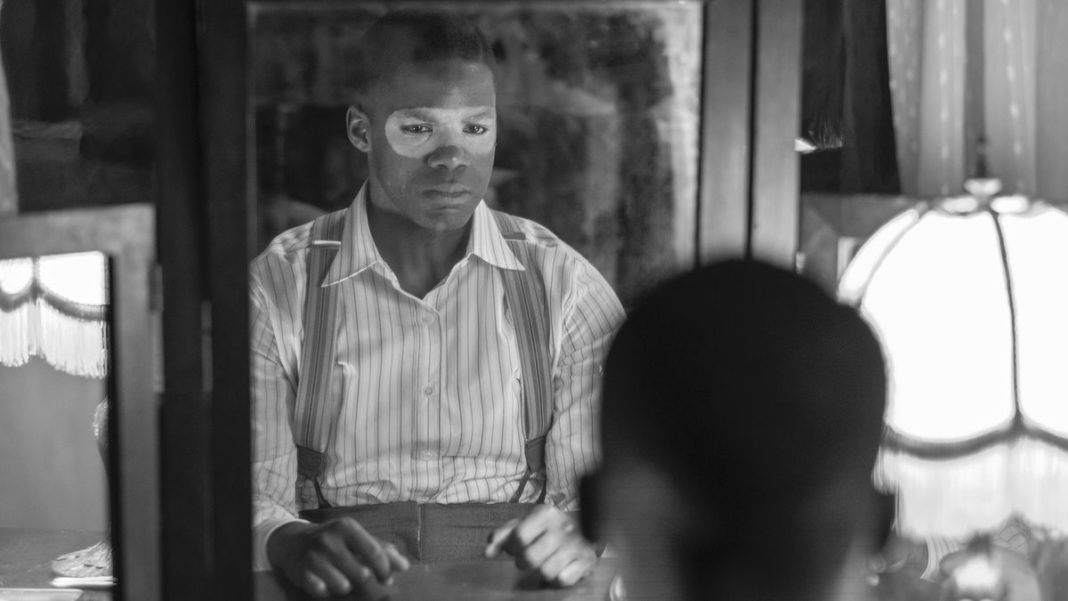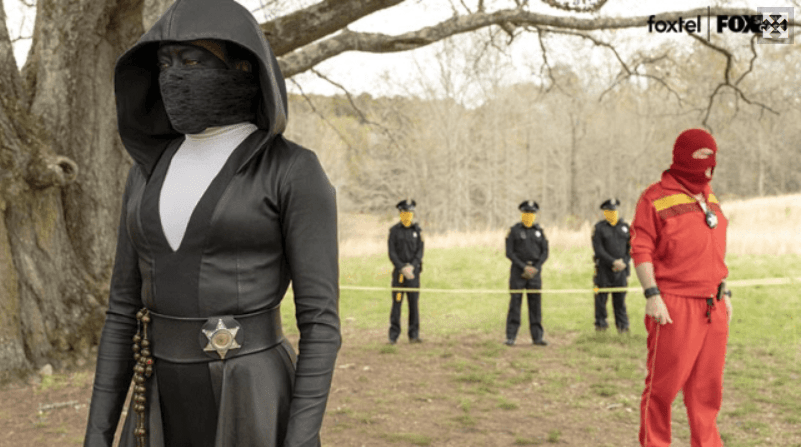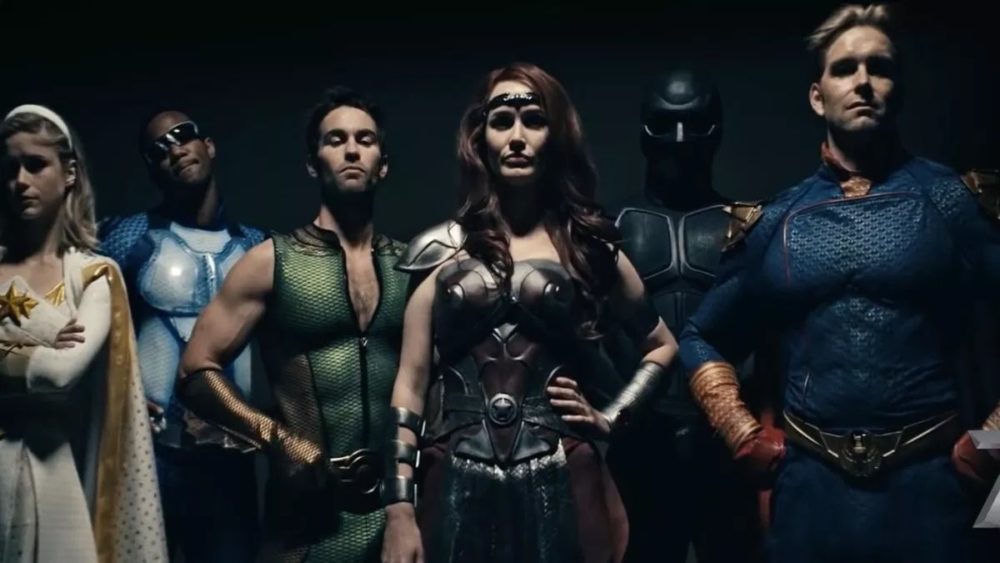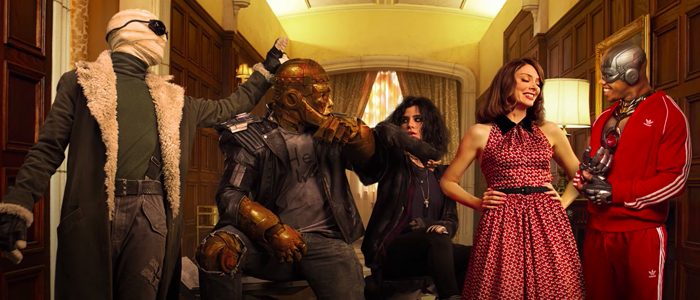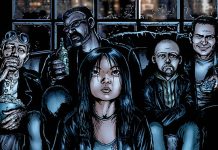At the start of a new year, it’s hard not to look backwards and ruminate a little before you move onward. Looking at the pop culture bubble of 2019, there are several trends that come to mind – the year of big (and often bad) endings, the year of the streaming wars, etc. But I think one of the most interesting and exciting trends of 2019 was the way superhero-centric television took a great leap forward, proliferating a variety of platforms and positioning itself as water-cooler-worthy fodder.
And so with that, here’s a toast to three shows that broke the mold in 2019.
Watchmen (HBO)
What is it?
It snuck in right at the end of the year but undeniably had the biggest pop culture impact of any show on this list. Watchmen, helmed by Lost and The Leftovers showrunner Damon Lindelof, premiered on HBO shrouded in mystery – was this a new thing, a reboot, or what? Almost unbelievably, it really did turn out to be a sequel to the Alan Moore and Dave Gibbons creation, perhaps marking the first time a graphic novel has received a high-profile sequel television series without an initial reboot.
How is it different?
It’s fascinating that Watchmen was willing to dive right into cementing itself as a sequel to something that took place in another medium, and perhaps even more fascinating that even audiences unfamiliar with the original work took notice. Watchmen built up a whole new murder mystery and cast of costumed characters – most notably the lead performance from Regina King as Sister Night. It also marked the return of some old characters and excavated societal fractures and wounds of today.
Treating the graphic novel as canon that created an alternate reality, Watchmen attempted to answer the question of what the world would look like some decades after the graphic novel ended. The story primarily centered around the persistence of racism, the meaning of familial legacy, and inherited trauma. The alternate-world-sequel concept was a risky one, but one that paid off by grounding the show in an established world while allowing it to tell new stories.
The Boys (Amazon)
What is it?
Working backwards from the end of the year to the beginning, we find The Boys smack dab in the middle. Dropping over the summer, The Boys is an adaptation of the Garth Ennis and Darick Robertson series. It stars Karl Urban and Jack Quaid as two men with suspicions that The Seven, their world’s pseudo-Justice League, isn’t as honorable and noble as they seem. The two men experience loss at the hands of The Seven and attempt to expose the super-powered team as the villains they truly are.
How is it different?
Most network television superhero shows are centered on the idea that the super-powered protagonist is the one you should root for. The Boys looks closer to what we could expect from a real-life version of super-powered individuals: the commodification and commercialization of the team, which focuses more on public relations and military contracts than it does on ethics and justice. There’s a huge sense of irony in the fact that the show was launched by Amazon, one of the most notorious corporate evil overlords of our time. But then again, what network could this show possibly run on that isn’t some extension of a major corporation?
Doom Patrol (DC Universe)
What is it?
When Doom Patrol first aired on DC Universe in February of this year, it was such an unexpected gift. At the time, I preemptively dubbed it the best superhero show of the decade (how was I supposed to know we’d get even more competition in the last year?). Following the eponymous group of heroes dubbed the Doom Patrol, the series focused on the formation of a group of loners and outsiders brought together by a doctor who offered them treatment and lodging in his own home. The series is based on the comic created by Arnold Drake, Bob Haney, and Bruno Premiani, and later revamped by Grant Morrison and Richard Case, among others. From well-known heroes like Cyborg to lesser-knowns like Cliff Steele, a robotic former NASCAR driver, the team featured a diverse and fractured set of individuals learning to cope with the “superpowers” that changed them.
How is it different?
The most unique aspect of Doom Patrol as a concept is the way the team views their powers: as consequences and reminders of the mistakes they made rather than invitations to a virtuous or higher moral calling. Rooted in the “found family” concept, Doom Patrol’s more fascinating turns focus more on therapy breakthroughs than sprawling battles.
But perhaps the most inviting difference in Doom Patrol is its on-screen representation. It’s 2019, but we still live in a world where Marvel’s first-ever LGBTQ+ representation on the big screen is a small cameo, one that can be quickly edited out for other regions. Superhero television has fared better, to be sure, but still largely centers on a certain set of qualities: young, attractive, often white, usually straight, etc. And yet Doom Patrol, by featuring a genderqueer street named Danny or a bandaged pilot lamenting living his life in the closet, provides more representation in a single episode than the MCU has in more than a dozen films.
These were three of our favorite television shows that broke the boundaries of traditional storytelling or featured arcs not often seen in superhero television. What’d we miss? What do you think 2020 has in store? Let us know in the comments!


